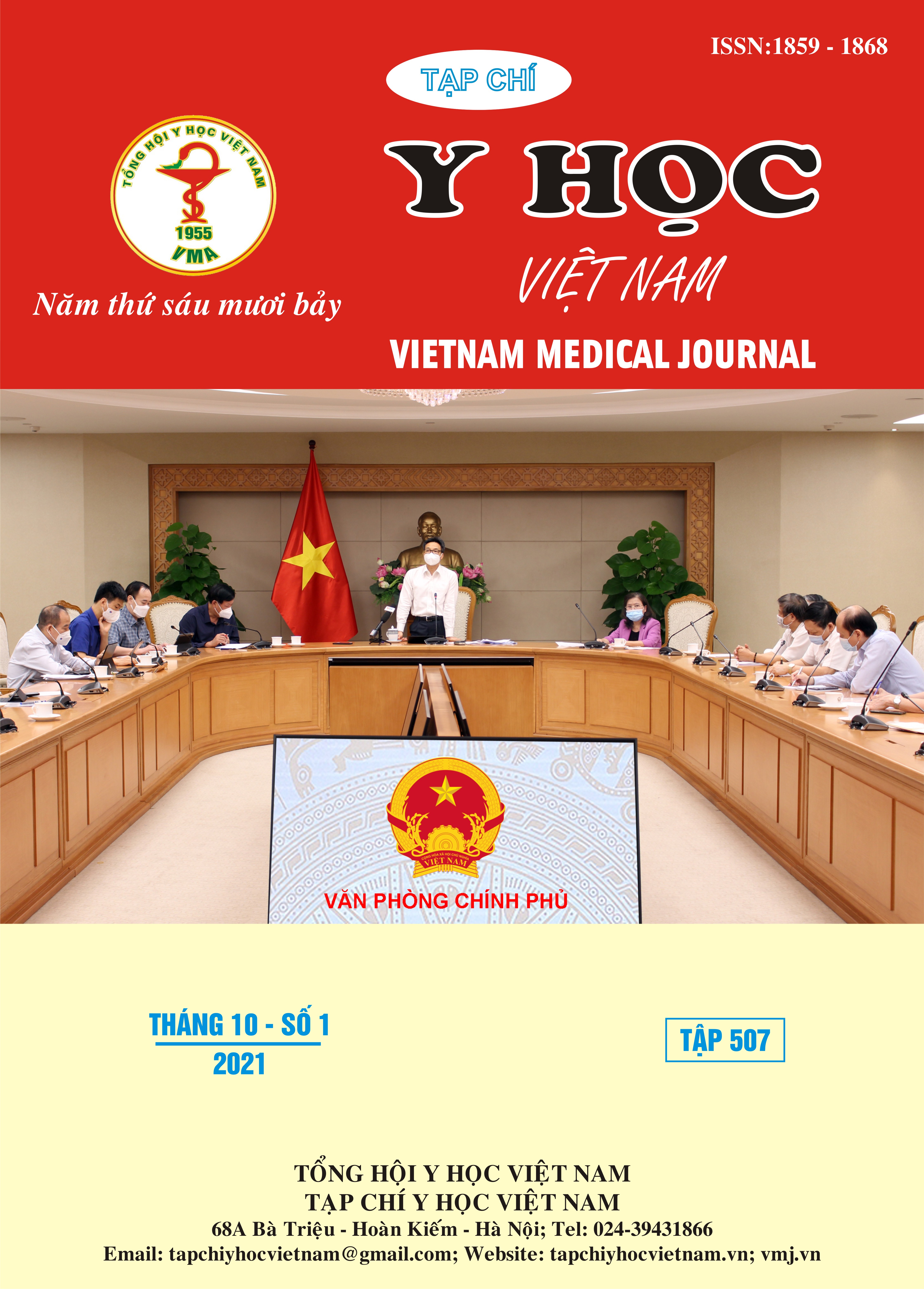COMMENT ON THE CHARACTERISTICS OF PERIPHERAL SOLITARY TUMOR-LIKE LESIONS ON CHEST COMPUTED TOMOGRAPHY
Main Article Content
Abstract
Objectives: Comment on the histological distribution and the value of some characterisrics on chest computed tomography in predicting the risk of lung cancer. Subjects and methods: Descriptive and prospective study on 116 patients with peripheral solitary tumor-like lesions who were diagnosed and treated by Video-assisted-thoracoscopic surgery at the Department of Thoracic Surgery - Pham Ngoc Thach Hospital, from 11/2011 to July 2014. Results: The mean age was 57.1 ± 12.3, the male/female ratio was 1.3/1. Distribution of patients according to histopathological results include: cancer accounted for 41.4%, of which adenocarcinoma accounted for mainly (97.9%); Benign tumors accounted for 58.6%, of which: tuberculosis and chronic pneumonia accounted for mainly (69.4% and 23.6%). Analysis of the relationship between some features on chest CT with histopathology showed: lesions in the middle lobe of the right lung, lobulated margin or irregular with many spiculation, has a higher rate of lung cancer (p < 0.01), while lesions of 2cm or less in size, sharp and smooth margins have a higher rate of benign tumors (p < 0.005); The rate of lung cancer increased escallatelly with the lesion size. Conclusion: Peripheral solitary tumor-like lesions often have histological of adenocarcinoma lung cancer (rate 40.5%) or tuberculosis (rate 43.1%). The location, size and characteristics of the tumor margin on the chest CT scan have good value in predicting the risk of lung cancer.
Article Details
Keywords
Video-Assisted-Thoracoscopic surgery, peripheral lung tumour, lung cancer
References
2. Jime'nez M. F. (2001), "Prospective study on video - assisted thoracoscopic surgery in the resection of pulmonary nodules: 209 cases from the Spanish Video-Assisted Thoracic Surgery Study Group", European Journal of Cardio - thoracic Surgery, 19, 562 - 565.
3. Ost D., Fein A. M. (2008), The Solitary Pulmonary Nodule: A Systematic Approach, Fishman’s Pulmonary Diseases and Disorders, ed. Fishman A. P., Elias J. A., Robert M., et al., Vol. 1 & 2, The McGraw - Hill Companies, United States of America, 1815 - 1828.
4. Shields T. W., LoCicero III J., Reed C. E., et al. (2009), General Thoracic Surgery, 7th ed, Vol. 1, Lippincott Williams & Wilkins, Philadelphia, 403, 551 - 559.
5. Lê Tiến Dũng (2000), Đặc điểm Ung thư phế quản: Một số đặc điểm lâm sàng và vai trò chụp cắt lớp điện toán trong chẩn đoán, Luận án Tiến sỹ Y học, Đại học Y dược thành phố Hồ Chí Minh, Tp. Hồ Chí Minh.
6. Đoàn Thị Phương Lan (2014), Nghiên cứu đặc điểm lâm sàng, cận lâm sàng và giá trị của sinh thiết cắt xuyên thành ngực dưới hướng dẫn của chụp cắt lớp vi tính trong chẩn đoán các tổn thương dạng U ở phổi, Luận án Tiến sỹ Y học, Đai học Y Hà nội, Hà nội.
7. Đỗ Kim Quế (2010), "Phẫu thuật cắt nốt đơn độc phổi qua đường mở ngực nhỏ với nội soi Lồng ngực hỗ trợ", Y học Thành phố Hồ Chí Minh, 14 (phụ bản số 2), 41 - 45.
8. Lê Sỹ Sâm (2009), Sinh thiết U phổi ngoại biên và xác định giai đoạn Ung thư phổi nguyên phát bằng phẫu thuật nội soi lồng ngực, Đại học Y dược thành phố Hồ Chí Minh Tp. Hồ Chí Minh.


